Click the blue text above to follow “Surface Process Research”
Stay updated with the latest research in just one minute a day!
Research Highlights
-
Comparative Analysis of Dual Indicators: A systematic comparison of the simulation capabilities of SPI and SPEI under warming scenarios of 1.5°C, 2°C, and 3°C, highlighting the impact of temperature (evapotranspiration).
-
High-Resolution CMIP6 Simulations: Based on the raw outputs of 8 CMIP6 models, this study assesses for the first time the changes in frequency, duration, and severity of future drought events on a global scale.
-
Regional Assessment of Drought Types: The global land is divided into humid, transitional, and arid regions, with separate assessments of future drought changes in different climate zones to provide a basis for regional adaptation strategies.

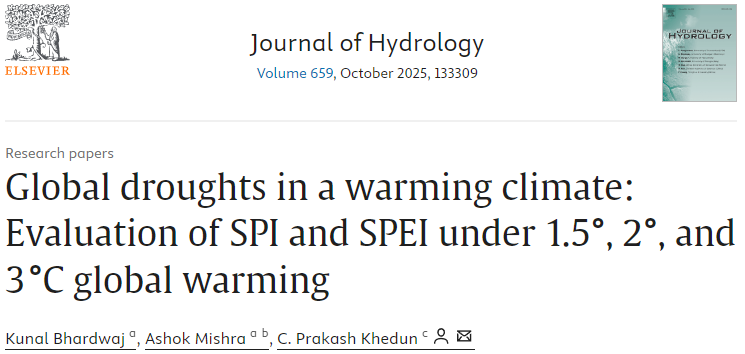
Original Article Link
https://doi.org/10.1016/j.jhydrol.2025.133309
Research Objective
This study aims to evaluate the simulation capabilities of CMIP6 models for historical droughts and quantify the changes in frequency, duration, and severity of future global meteorological drought events under warming scenarios of 1.5°C, 2°C, and 3°C based on SPI and SPEI indicators, revealing the differential impacts of temperature rise on drought risks in different regions.
Background and Motivation
Global warming has led to an increase in the frequency and severity of droughts, posing threats to ecosystems, agriculture, and water resource security. Although global climate models can simulate precipitation trends, there remains significant uncertainty in simulating droughts as complex meteorological extreme events, especially when considering temperature-driven changes in evapotranspiration. To support risk assessments under the temperature control targets of the Paris Agreement, this study analyzes future drought patterns from both SPI and SPEI perspectives based on the latest CMIP6 models to enhance the predictive capabilities of climate models regarding drought events.
Research Methodology Details
This paper selects 8 CMIP6 climate models and directly uses their output data (precipitation, temperature, radiation, wind speed, humidity, etc.) to calculate potential evapotranspiration (using the FAO-56 Penman-Monteith method) without bias correction, thereby constructing SPI and SPEI indices. The historical period (1950–2014) uses the CRU TS4.0 dataset as a benchmark to evaluate the simulation biases of each model regarding drought frequency, duration, and severity. Future simulations predict the trends of drought indicators based on 30-year windows achieving 1.5°C, 2°C, and 3°C warming under the SSP2-4.5 and SSP5-8.5 pathways. Additionally, drought events are uniformly defined on a 6-month scale based on drought index definitions and duration thresholds to ensure spatial and temporal consistency. Finally, the global land is classified into humid, transitional, and arid regions based on the aridity index (AI) to assess the differences in drought responses.
Main Results
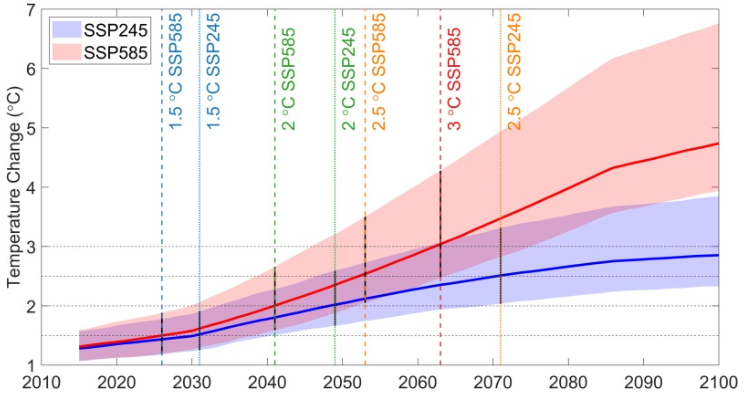
Changes in global average diurnal temperature range from the prehistoric period starting from 1850-1900
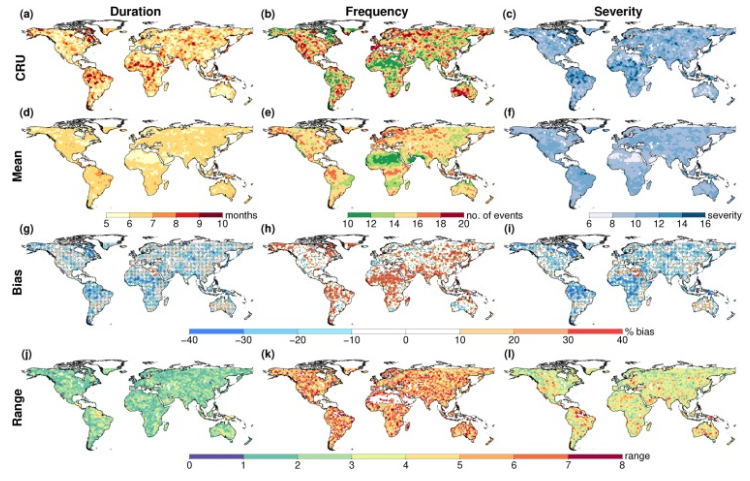
Observations of all droughts with SPI6 < -1 during the historical period 1950-2014 (a, b, and c) and the drought characteristics of the CMIP6 multimodel mean (d, e, and f)
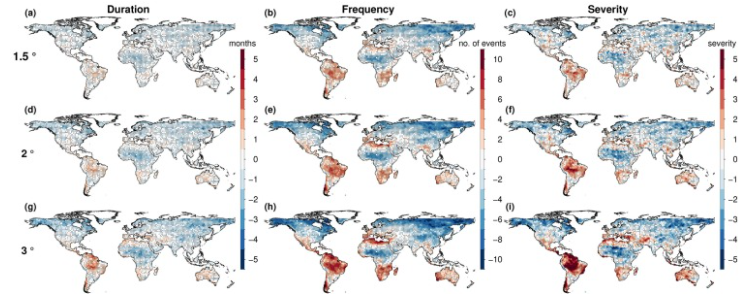
Future warming period multimodel average drought changes simulated with SPI-6 and SSP5-8.5
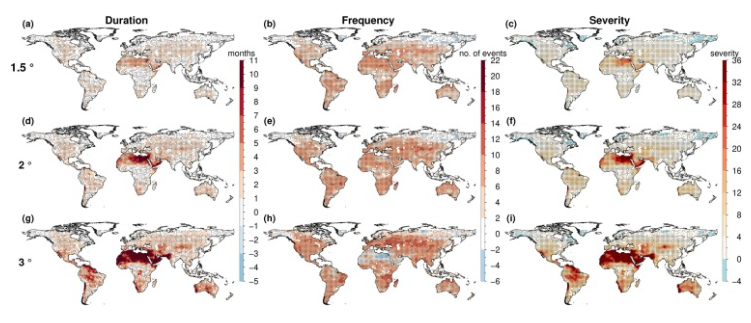
Future warming period multimodel average drought changes simulated with SPEI-6 and SSP5-8.5

Main Contributions of the Paper
-
Revealing the Increasing Trend of Drought Risk Dominated by Temperature Effects: The SPEI results indicate that the increase in evapotranspiration caused by rising temperatures is the main reason for the increase in future drought frequency and intensity.
-
Clarifying the Differences in Drought Indicators: SPI (precipitation-dominated) underestimates the trend of drought changes, while SPEI (including evapotranspiration) predicts a broader and more severe drought deterioration.
-
Providing Regionally Differentiated Drought Predictions: Drought changes exhibit different patterns across various wet and dry climate zones, providing refined bases for future drought adaptation and management strategies.
Potential Future Research Directions
-
Improving Model Resolution: Introducing higher-resolution regional climate models (such as CORDEX) to enhance simulation accuracy for specific regions.
-
Integrating Hydrological and Agricultural Drought Indicators: Combining soil moisture and crop growth simulations to improve the practical application value of drought risk assessments.
-
Quantifying Uncertainty and Optimizing Model Integration: Strengthening research on multimodel integration and bias correction algorithms to reduce the impact of inter-model differences on prediction results.

Welcome to follow the public account “Surface Process Research” for the latest articles delivered first.
Disclaimer: This article follows the original protection measures of the WeChat public platform. The article source has been indicated. If there are any copyright issues, please contact us in a timely manner. We will promptly delete or indicate the original author and source. This public account’s original articles are welcome to be reprinted, with the source indicated. This article is for academic sharing and dissemination only.